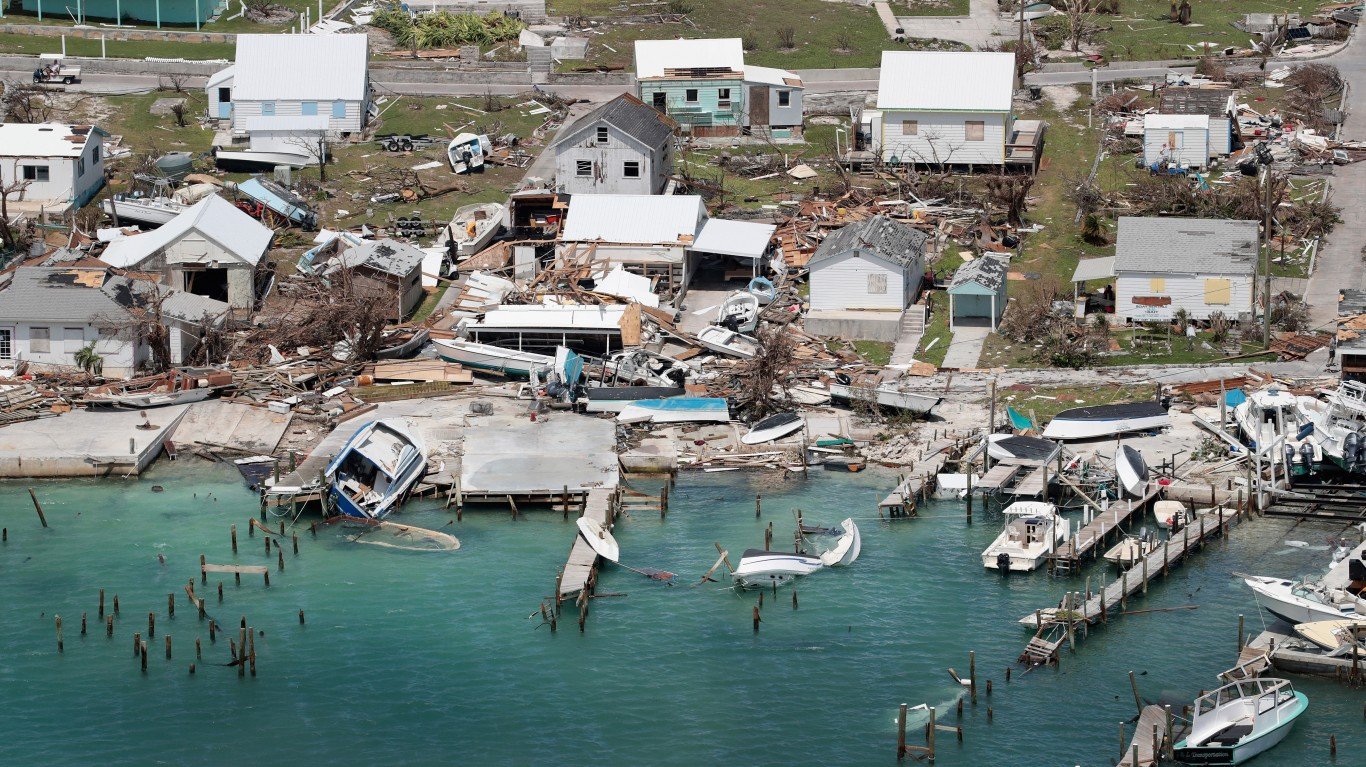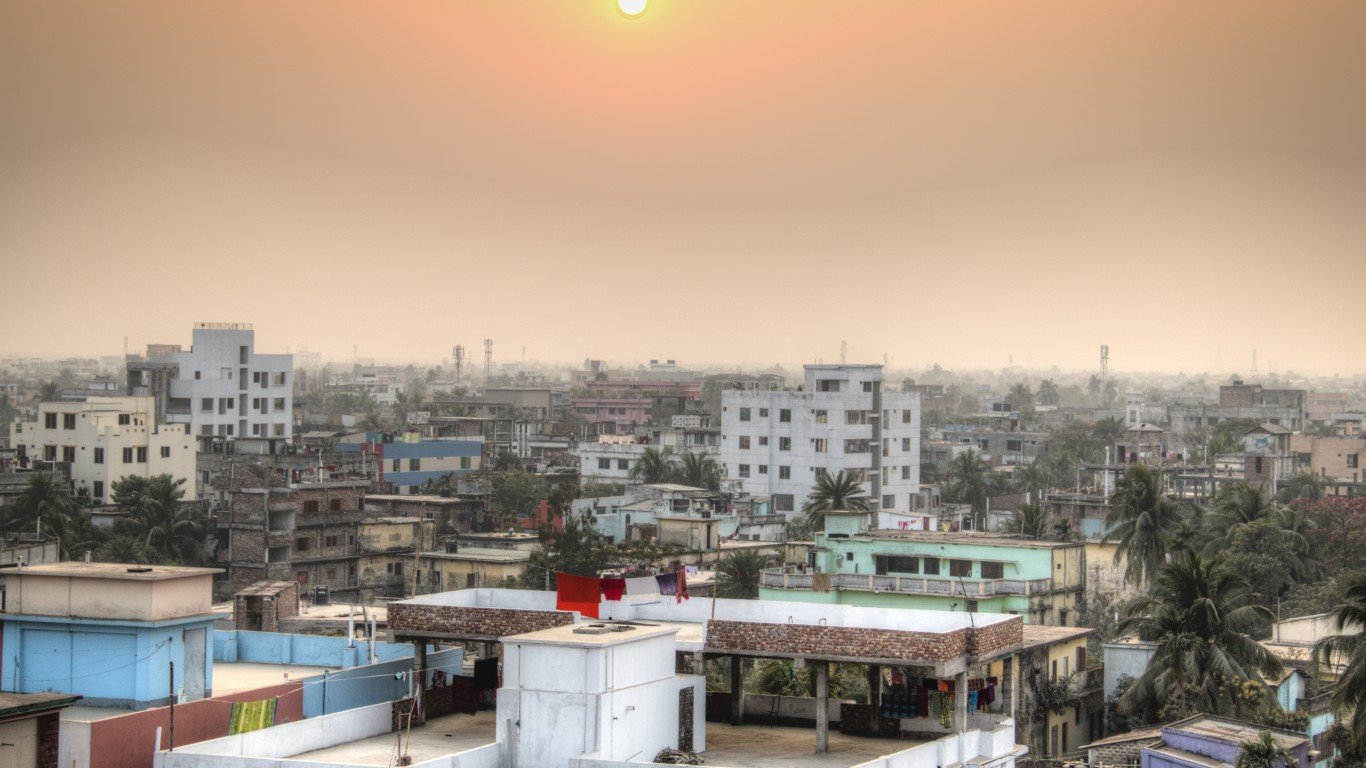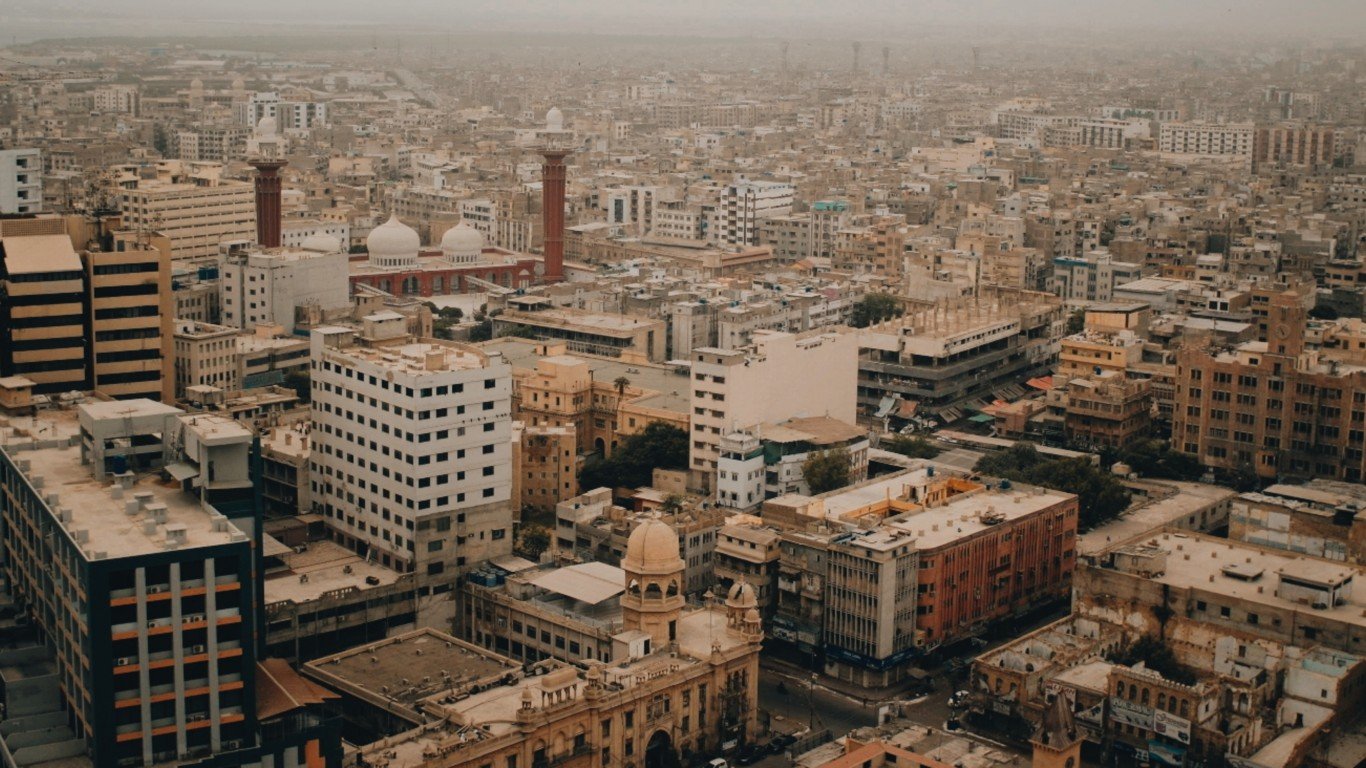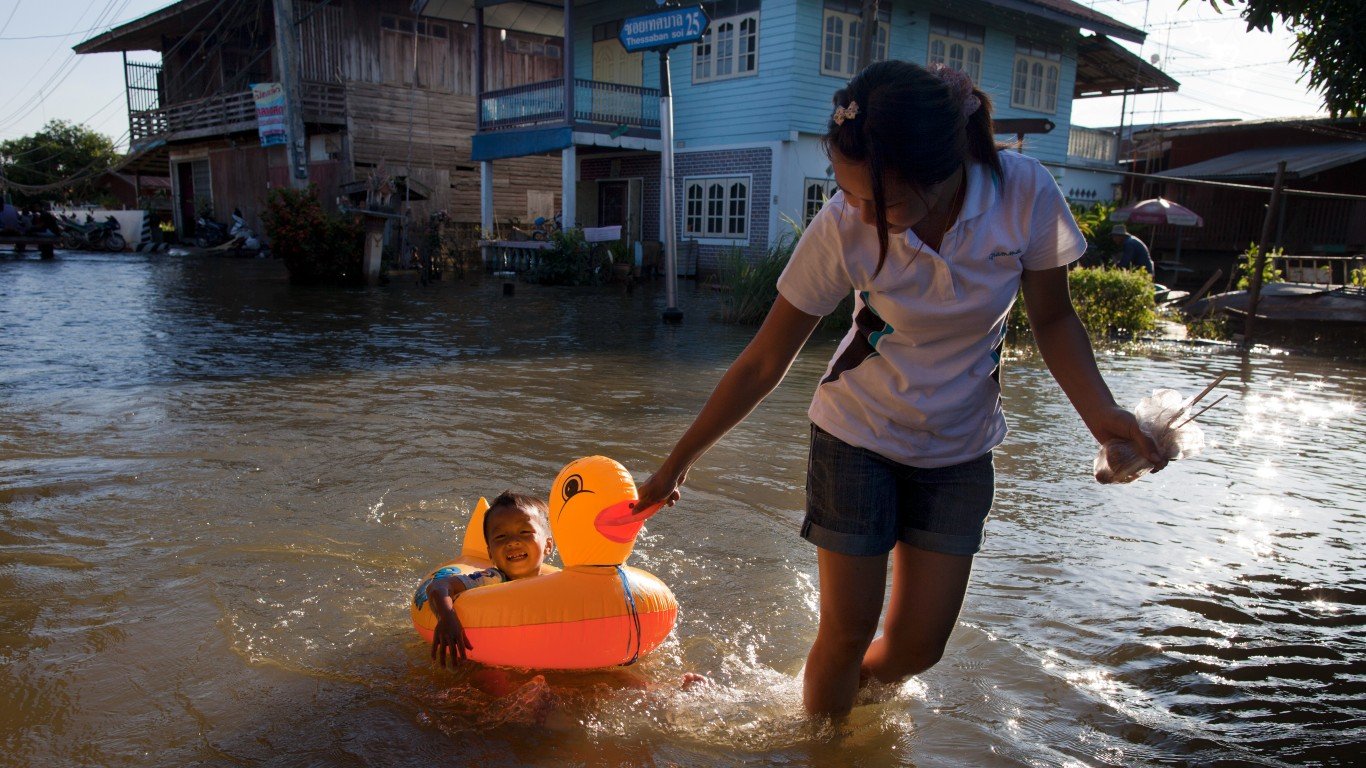
Bahamas
> 2020 CO2 emissions: 1.89 million metric tons
> Share of global emissions: 0.01%
> Population: 393,250
The greatest weather event threat to the Bahamas is and has been hurricanes, but climate change has upped the ante. In 2019, Hurricane Dorian was the most dangerous hurricane to hit the region, wallopping the Bahamas with 185 mph winds and dumping 36 inches of rain in a matter of hours. Seventy-four people were killed, and damages amounted to $3.4 billion. Almost half the houses on two of the islands were damaged or destroyed.

Bangladesh
> 2020 CO2 emissions: 108.5 million metric tons
> Share of global emissions: 0.30%
> Population: 164,689,380
Climate change will cause the largest mass migration in human history, and it has already begun in Bangladesh. Almost one-quarter of the country is less than 6 feet above sea level, and most people live in the coastal plains where farmers benefit from the rich delta soils. Every year, a large portion of the country is inundated by flooding, 60% after a major storm. Entire villages have been forced to move inland due to sea level rise and flooding.

Pakistan
> 2020 CO2 emissions: 217.02 million metric tons
> Share of global emissions: 0.60%
> Population: 220,892,330
Pakistan is suffering from several impacts of climate change. Melting glaciers are causing floods and depriving the country of fresh water reserves; sea level rise is threatening the coastlines; and temperatures are becoming “too hot for human tolerance,” according to nonprofit Climate Refugees. In the summer of 2021, the temperature reached 126 degrees Fahrenheit in Jacobabad.

Thailand
> 2020 CO2 emissions: 255.46 million metric tons
> Share of global emissions: 0.71%
> Population: 69,799,980
Thailand has been experiencing the effects of climate change for decades, with rising temperatures, changing weather patterns, and diminishing precipitation, leading to alternating floods and droughts. The greatest damage lies in the future, with sea level rising faster than the global average. There is talk of moving the capital from its current location because Bangkok, which is also sinking from its own weight, is only 5 feet above current sea level.

Nepal
> 2020 CO2 emissions: 17.89 million metric tons
> Share of global emissions: 0.05%
> Population: 29,136,810
In July of 2021, while its delegates were preparing their presentations for the climate summit in Glasgow, intense monsoon rains killed 50 people and washed away valuable infrastructure across Nepal. The event, and the greater picture of melting glaciers, erratic precipitation patterns, floods, and droughts that are ruining farms and displacing people, was a reminder for summit participants of the devastation that climate change is wreaking in the world’s poorest countries.






